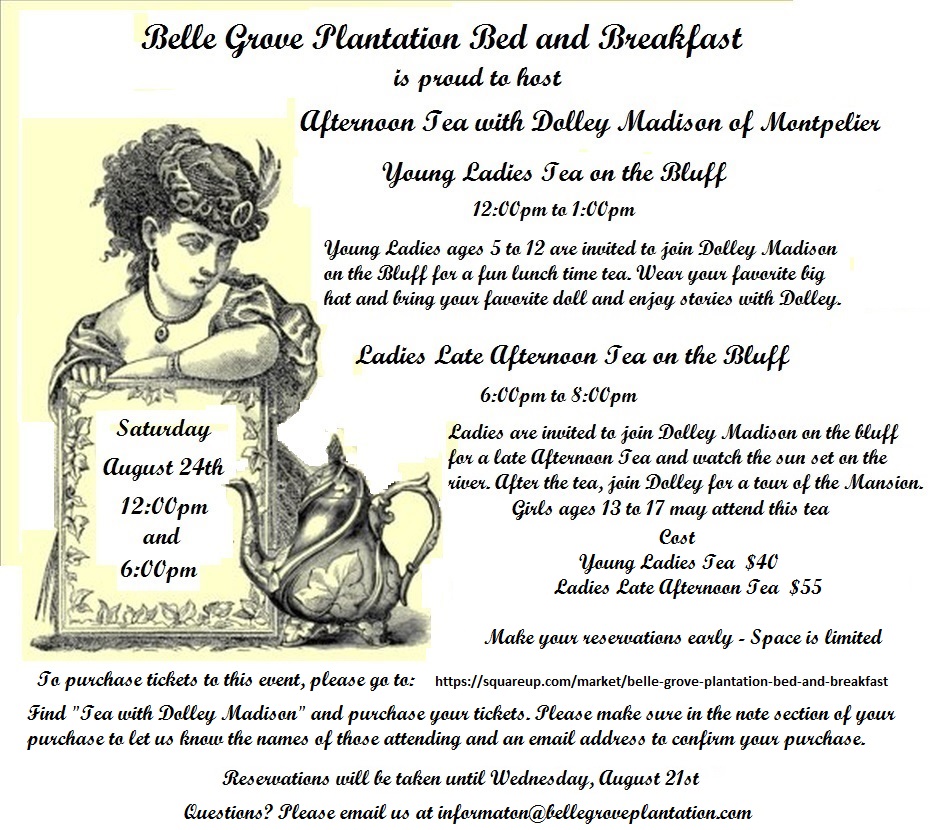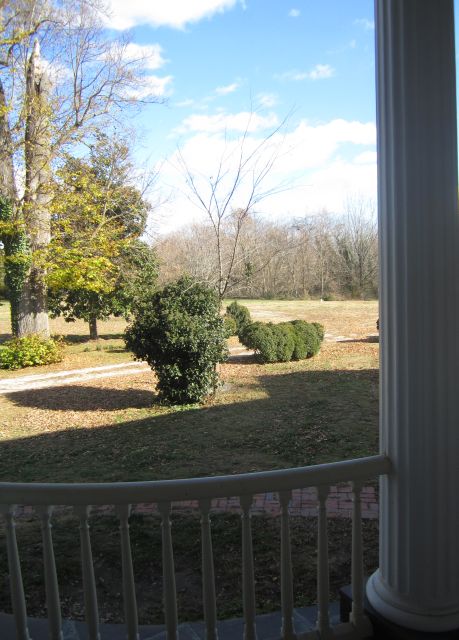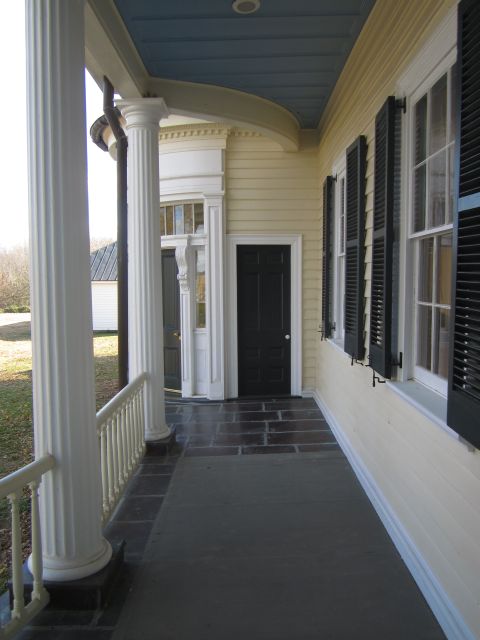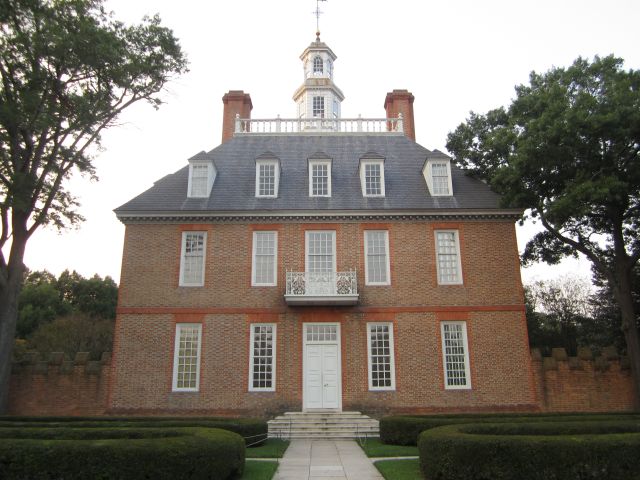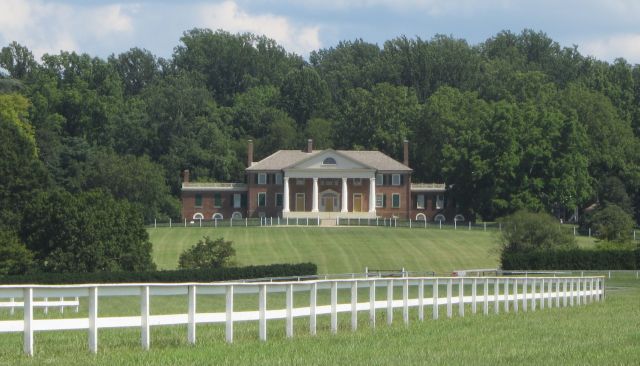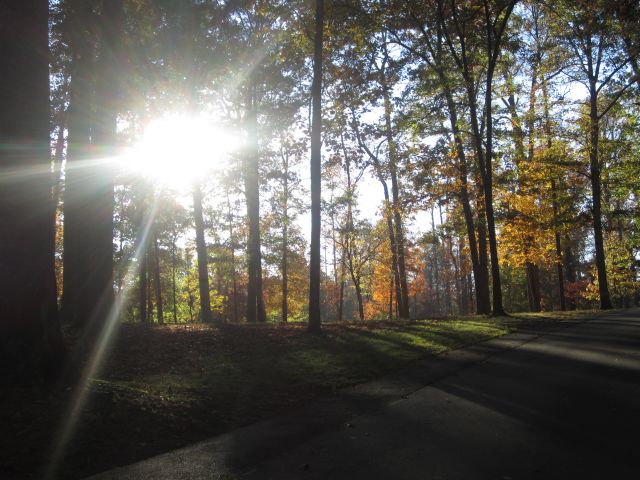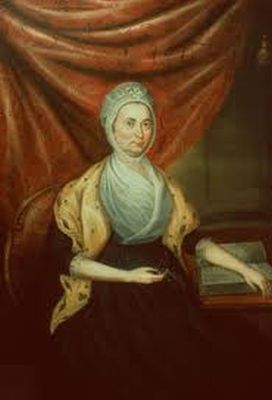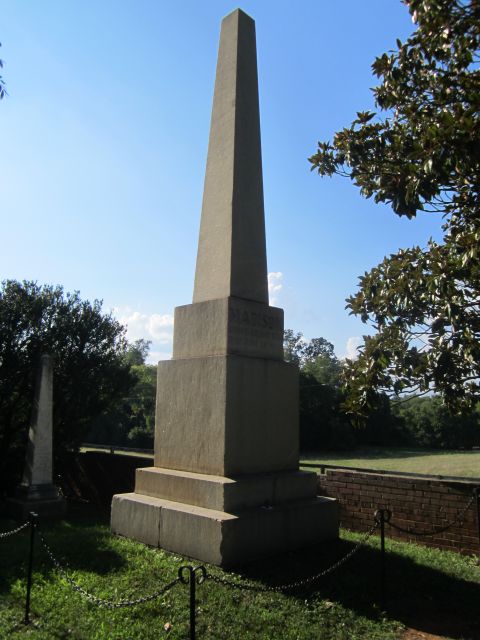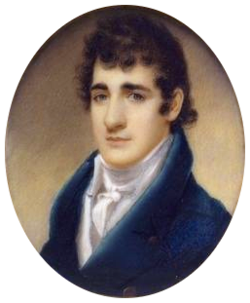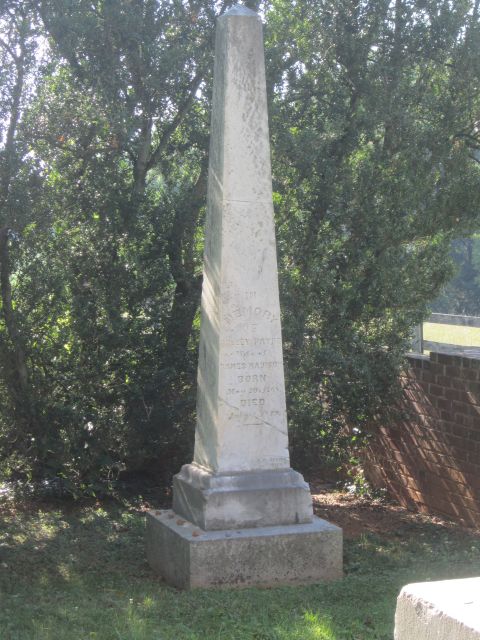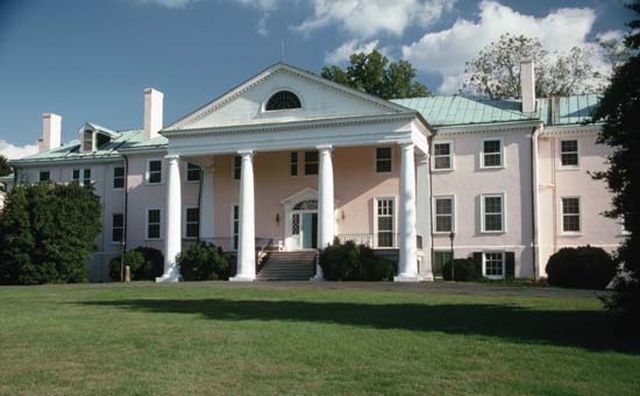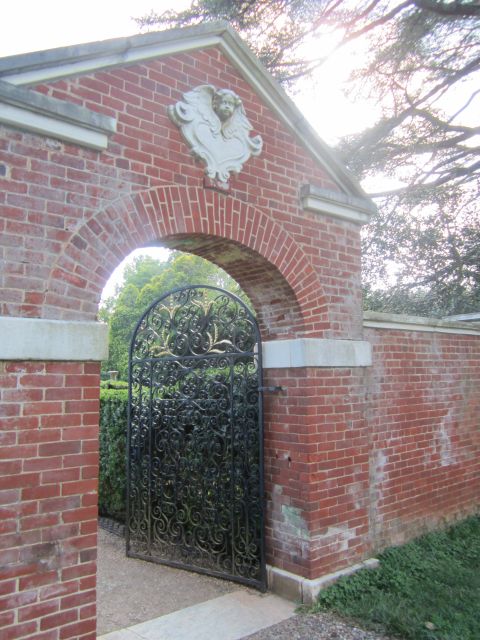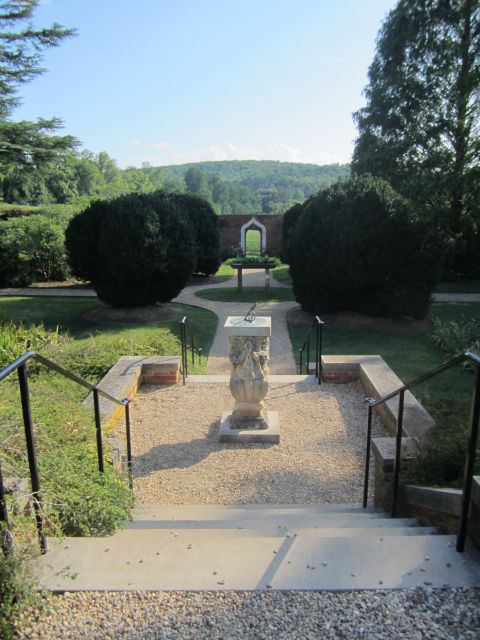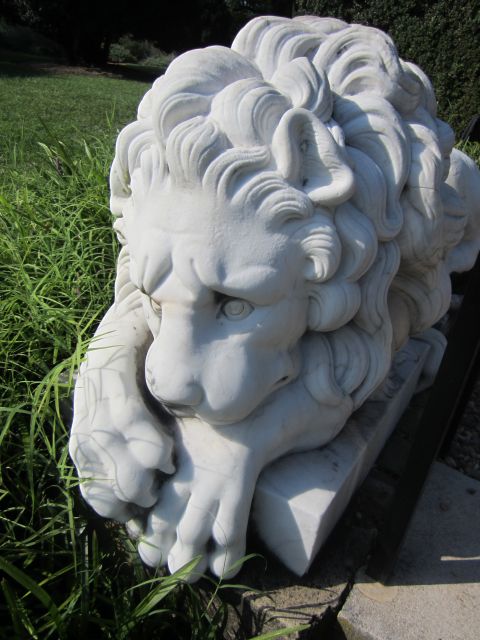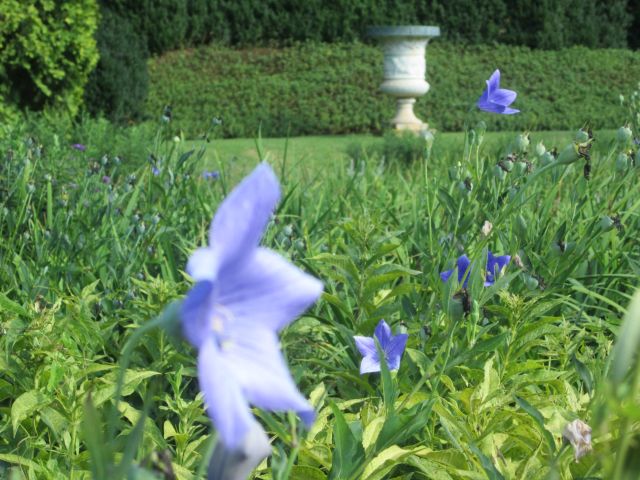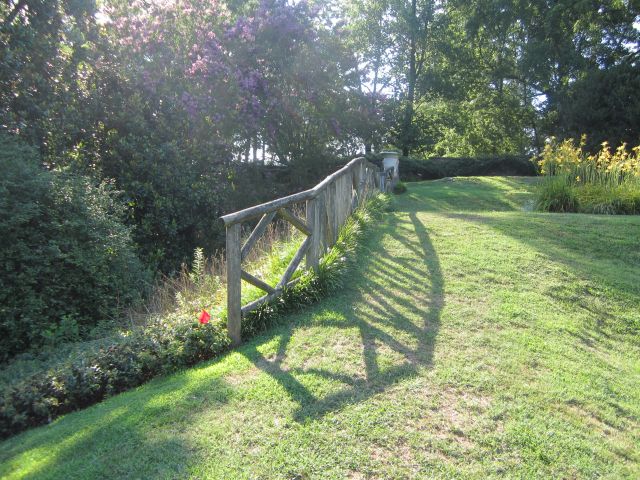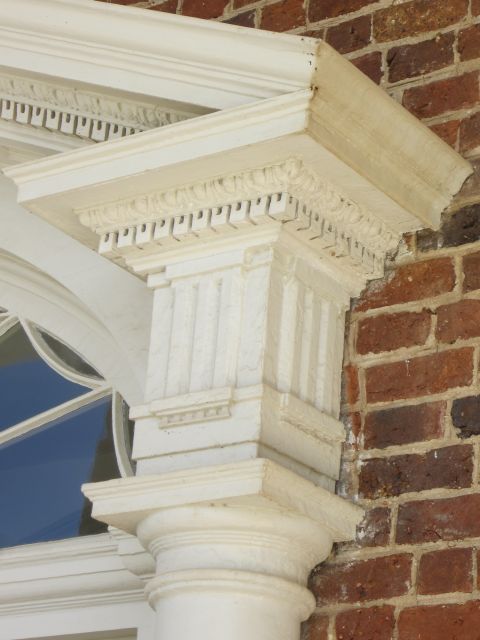Aug. 1st 2012

Special Note:
There was so much that happened this long weekend, it is going to take me four postings to get it all in.
I will tell you the last post will have the most exciting part!

After a very busy week at my current job, I decided it was time for a long weekend. So Brett and I took Monday off and set off on a grand weekend. The best part of the weekend was that we had nothing planned. We took it moment by moment. And I have to tell you, it was wonderful!

Belle Grove Plantation
Middletown, Virginia
When Friday rolled around, I knew that I wanted to head up to Middletown, Virginia. This is the location of the Belle Grove Plantation that was owned by James Madison’s sister, Nelly Madison Hite. It was in part the location that started us on our search for our bed and breakfast.
www.bellegrove.org
This plantation got its start with Jost Hite, a German immigrant who came to the Shenandoah Valley in 1732 with his partner Robert McKay to settle on 140,000 acres with sixteen other families. These acres were acquired through two land grants. In 1770, Isaac Hite Sr. purchased 483 acres that would become the Belle Grove Plantation.

Old Hall foundation
Belle Grove Plantation, Middletown, Virginia
The grand manor house was not the first home on this plantation. There was a large limestone home that was built around 1750 for a tenant farmer. The foundation of this home, later called “Old Hall” can still be seen next to the smokehouse. It was in this house that James Madison brought Dolley to for their honeymoon.

Belle Grove Plantation
Middletown, Virginia
Isaac Hite Sr.’s son, Isaac Hite Jr, who attended William and Mary College and served during the American Revolution, married Nelly Conway Madison, sister of James Madison in 1783. Major Hite’s father gave the couple the 483 acres as a wedding gift. The manor house was started in 1794 and took three years to complete. It was through his brother-in-law James Madison friendship with Thomas Jefferson that Major Hite was able to consult with Mr. Jefferson on the design of Belle Grove. Mr. Jefferson’s influence is seen in the final design. The manor house is built of limestone that was quarried from the property. It is said that Nelly named the plantation “Belle Grove” after our Belle Grove Plantation in Port Conway, Virginia.



Sadly Nelly Madison Hite would not live very long in this beautiful manor. She passed away in 1803, just six years after its competitions. From my research Major Hite and Nelly had three children:
James Hite Jr – Born January 29, 1793 – Died January 11, 1860
James Hite – Born April 10, 1788 – Died December 8, 1791
Nelly Conway Hite – Born December 1, 1789 – Died 1836
Nelly Madison Hite would be laid to rest in the family cemetery in Warren County. Major Hite would marry Ann Tustall Maury. With his three children with Nelly and another ten with Ann, Major Hite expanded his manor house to include a 100 foot façade to the west side of the house. He would also expand his land holdings to a total of 7,500 acres and would have 103 slaves. He would open and operate a general store, grist mill, saw mill and distillery. The house remained in the Hite family until Ann’s death in 1851.

View from the front stairs
Belle Grove Plantation, Middletown, Virginia
After the Hite family, there were several owners. In 1907, the Brumback family purchased the plantation. In the 1920’s they would operate an inn. It was sold to Francis Welles Hunnewell of Wellesley, Massachusetts in 1929. He would carefully restore this manor house in the 1930s and 1940s and later bequeath the house and 100 acres along with a $100,000.00 endowment to the National Trust for Historic Preservation at his death in 1964. The plantation would open as a museum in 1967 and is still operating as a museum and working farm to this day.

Site of the Cedar Creek Battle (also known as the Battle of Belle Grove)
Front field of Belle Grove Plantation, Middletown, Virginia
According to Wikipedi, during the Civil War, this plantation was center stage for the Battle of Cedar Creek, also known as the Battle of Belle Grove. This battle was part of the Valley Campaigns of 1864. During this campaign, this area would exchange hands 70 times! In one day it would exchange hands 13 times! This area of the Shenandoah Valley was important to both sides as it would have given a backdoor to either Washington D.C. or Richmond. During this time, General Philip Sheridan had burned his way through the Shenandoah Valley, destroying crops, livestock and homes, much like that of General Sherman’s march through the South.

Lieutenant General Jubal Early
On October 19, 1864 Lieutenant General Jubal Early launched a surprise attack against the encamped army of Major General Philip Sheridan, just across the Cedar Creek, just northeast of Strasburg, Virginia. During this fight, seven Union infantry divisions were forced to fall back and lost numerous prisoners and cannons. Lieutenant General Early failed to continue his attach north of Middletown and Major General Sheridan, dramatically ridding to the battlefield from Winchester, Virginia was able to rally his troops to hold a new defensive line. A Union counterattack that afternoon route LieutenantGeneral Early’s army.

Major General Philip Sheridan
The Final Confederate invasion of the North was effectively ended. The Confederacy was never again able to threaten Washington D.C. through the Shenandoah Valley, nor protect one of its key economic bases in Virginia.

Our visit to this plantation was even more special as the plantation was also hosting a Family Reunion for the Hite Family. I had hoped to meet someone from the Hite-Madison side of the family, but I kept just missing them. Brett and I were able to meet several of the wonderful museum docents that we shared our Belle Grove with and compared notes on the families.
Since Brett and I had been there, they had added several new exhibits as well as carpeting in the halls. Believe it or not, but Major Hite had full rooms of carpet in the dining room and main parlor! Major Hite was great at keeping records and had saved the receipt for these purchases. The museum was able to trace the purchase back to the company in England, who are still in business. This company reproduced these carpets and they were installed as they would have been during Major Hite’s time at Belle Grove.

Some other points of interest at Belle Grove are outside. In the mortar on the back door wall, you can see the signatures of Civil War soldiers that were encamped on Belle Grove. There is also a beautiful kitchen garden just behind the house. Down past the barn, you can also see a field of stones. This is the slave cemetery of Belle Grove. Each grave is marked by a single stone with no names or dates.

Cannon Ball hit to the front wall
Belle Grove Plantation, Middletown, Virginia

View of the back of house from kitchen garden
Belle Grove Plantation, Middletown, Virginia

Slave Cemetery
Belle Grove Plantation, Middletown, Virginia

Stone marking the grave of a slave
Belle Grove Plantation, Middletown, Virginia
One last story of Belle Grove that is worth telling is the story of the death of Confederate Major General Stephen Dodson Ramseur. After being mortally wounded during the Battle of Cedar Creek, Major General Ramseur was carried from the field to Belle Grove. There his Union friends Major General George Armstrong Custer, Colonel Wesley Merritt and Lieutenant Colonel Alexander C. Pennington, all whom he had met at West Point sat with him through the night comforting him as he lay dying.

Major General Stephen Dodson Ramseur

Major General George Armstrong Custer

Colonel Wesley Merritt

Lieutenant Colonel Alexander C. Pennington
Once Brett and I finished walking around the house and remembering our first time at Belle Grove, we drove over to the Hite Family cemetery. I have to tell you this is not an easy find. It is located down a dirt road that runs along the river. If you didn’t know where to look, you would miss it. It is a small cemetery that has a flag pole in it center. Just as you walk in to cemetery through a modern chain link fence, you see a small grouping of tombstones to the back left. There towards the middle we found Nelly C. Hite. It first, I wondered why they had not placed her maiden name on the tombstone, but then I remembered that she had passed in 1803. Her brother would not rise to fame as the fourth president until 1809.



Story Continues Tomorrow
A Night in Winchester, Virginia








